Best Tomato Companion Plants
One of the most popular homegrown garden crops is tomatoes. As with many garden plants, tomatoes are prone to problems and pests. One natural way to improve your tomatoes and reduce problems is through companion planting. The best tomato companion plants help improve yield, reduce weeds, deter pests, and disease.
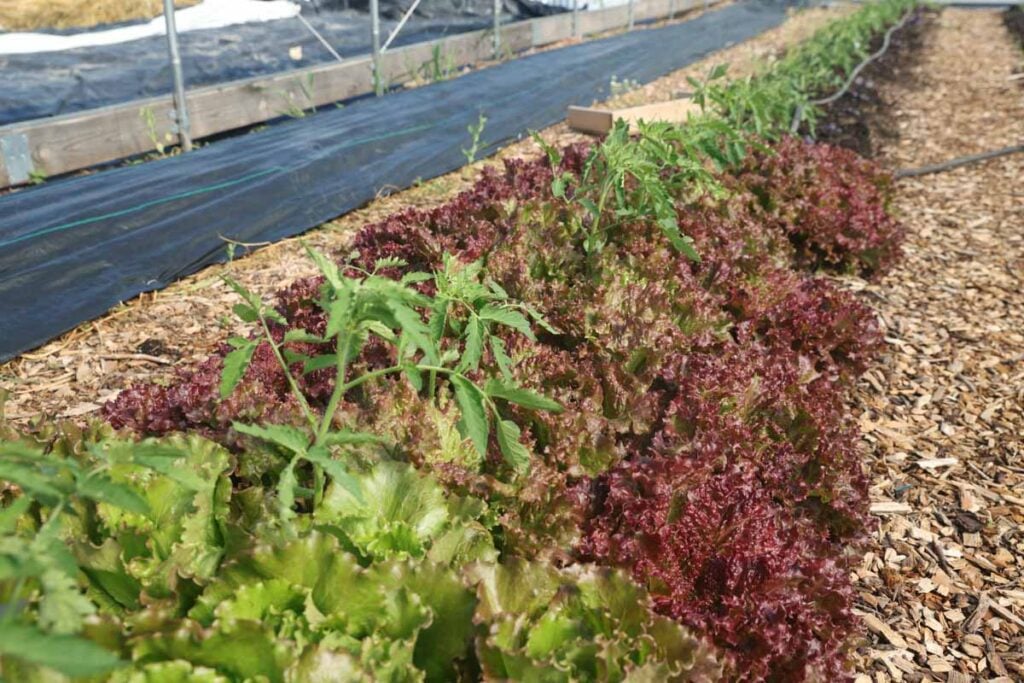
What is Companion Planting?
Companion planting is planting two or more plant species in close proximity to each other. The purpose of planting close together is to mutually benefit each other by improving growth and yield. Companion planting can also reduce pest pressure.
This post contains affiliate links. Here is the full disclosure.
History of Companion Planting
Records of companion planting go back thousands of years. The most well known companion planting in history is the “Three Sisters” combination which was used by the Native Americans.
The Three Sisters companion planting involved planting corn, beans, and squash together. Corn is spread out, the beans grow up the stalks like a trellis, and the squash vines cover the ground.
The main purpose of this was to grow corn with the added benefit of some additional food. The yield of beans and squash would not necessarily be as high as they would’ve been if planted with proper spacing and light. But it was a way to save time and utilize the space well.
A Garden Working in Harmony
At first glance, it may seem that a garden is made of many individual plants and components. But under closer observation and with scientific testing, we know that it is an ecosystem with all parts working together and affecting each other.
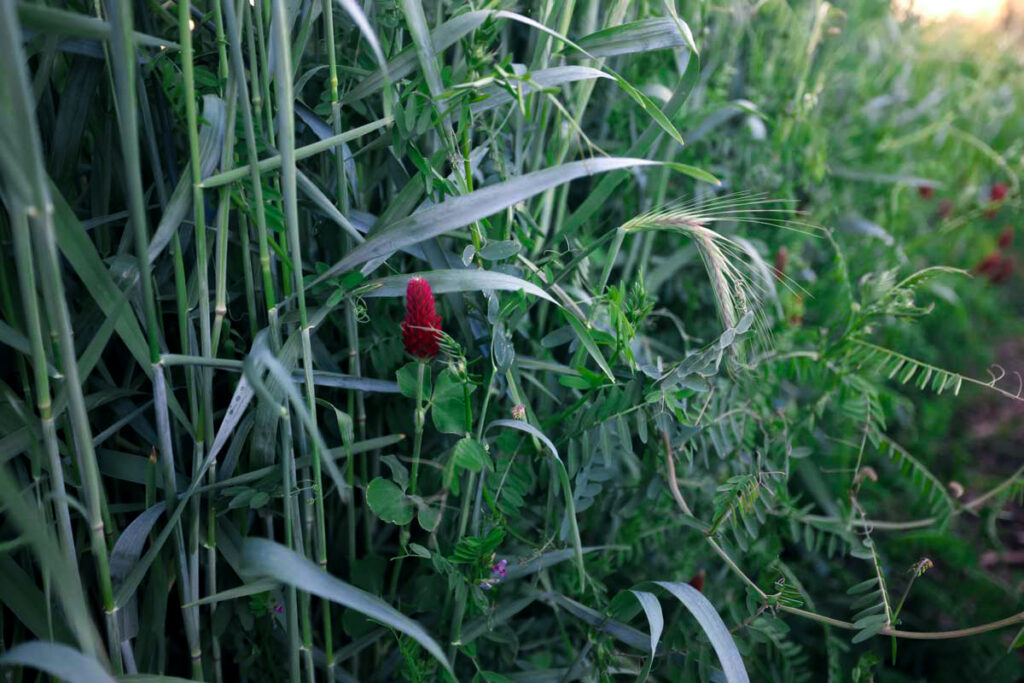
With this knowledge in mind, it’s beneficial to strategically plant specific crops in close proximity because they affect each other. Crops planted closely together can have positive, negative, or even no effects at all on each other.
Benefits of Companion Planting
Tomatoes have several companion plants that can benefit them. Consequently, it is best to be intentional and specific about what you plant next to your tomatoes and why.
Reduced Weed Pressure
A big benefit of companion planting is less weeds. This is because certain plants have the ability to negatively influence the growth of other nearby plants or seeds planted.
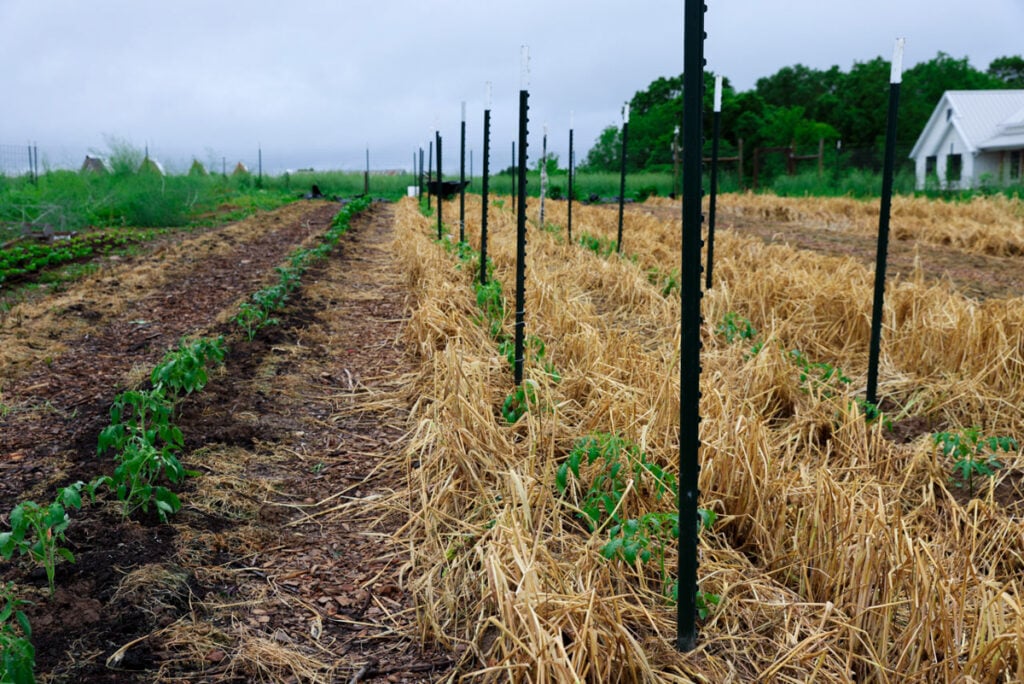
Reduced Pest Pressure
One of the number one reasons companion planting is popular is the idea of reduced pests on plants. This occurs through a few methods like trap planting, deterring pests, and tricking them. Reduced pest pressure can also occur through bringing in plants that serve as habitats for beneficial insects that kill pests.
Improved soil life, fertility, and/or structure
Some companion plantings improve soil fertility and health. For example, having living plants in the ground rather than bare soil will increase microbial activity. Other plants fix nitrogen from the atmosphere into the soil and make it available to the surrounding plants. These nitrogen fixing plants can be planted prior to the food crop and then terminated or alongside it, depending on the desired result.
Best Tomato Companion Plants for Pest Reduction
Basil
According to Plant Partners by Jessica Walliser, planting basil next to tomatoes can deter thrips. Thrips are tiny, slender insects about 1/20 of an inch long. They can damage plants by sucking plant juices, causing discoloration and scars on the plant. Thrips can spread various plant diseases.
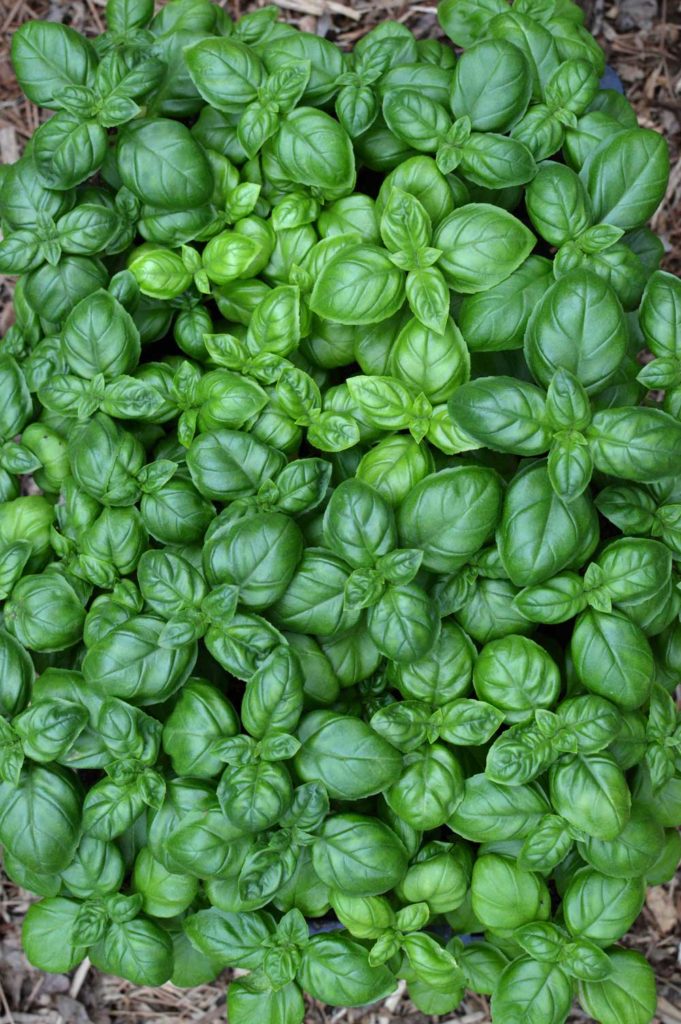
It’s also interesting to note basil and tomatoes are a good combination for culinary purposes too. It makes me wonder if it is a coincidence that these two are good companions in the garden too.
Marigolds
Marigolds are an annual summer blooming flower. They attract beneficial insects like parasitic wasps. Parasitic wasps are a large group of insects which lay their eggs inside other insects to complete their life cycle. As the eggs emerge they will feed on the host insect and kill it.
This provides a pesticide free way to reduce pests, especially ones that plague tomatoes like hornworms and tomato fruit worms. So any flowers that attract parasitic wasps to tomatoes are beneficial.
Cosmos
Like marigolds, cosmos are excellent at attracting beneficial insects like parasitic wasps, hoverflies, tachinid flies, and bees.
Best Tomato Companion Plants for Ground Cover & Increased Soil Fertility
Ground cover around plants can be either a living ground cover or a cover that was killed prior to planting and left in place. It is excellent for weed prevention but can have other benefits as well. However, it’s important to keep in mind your context and weigh out the pros and cons.
My personal experience is oftentimes when I transplant into ground cover the plants are more susceptible to cutworms. It doesn’t need to deter you but I hope to add awareness to a possible problem. An alternative is to use prevention methods on cutworms like plant collars, to delay planting, or to consider a different companion plant.
Clover
Clover is an excellent low growing cover that will prevent weeds from growing around tomatoes. It’s a legume which improves soil fertility.
Notes about specific varieties of clover:
Crimson clover should be planted in cool temperatures early in the growing season (or late fall for US growing zones 7+) to provide the coverage needed. It will need to be chopped back about a week after blooming to prevent it from reseeding in place. After that point it still acts as a ground cover, although not a flowering one.
White clover can also be used. Personally, I’ve always been nervous to plant it because it is a perennial. Once established it is difficult to remove without tillage.
Sweet Alyssum
Sweet Alyssum is an annual flower that forms a low growing ground cover. It will prevent weeds and also attract beneficial insects! A two for one deal on this flowering plant as a companion.
Hairy Vetch
Hairy vetch is a companion that should be planted in the winter wherever you plan to sow tomatoes the next year. It will fix nitrogen in the soil as it grows and help prevent weeds.
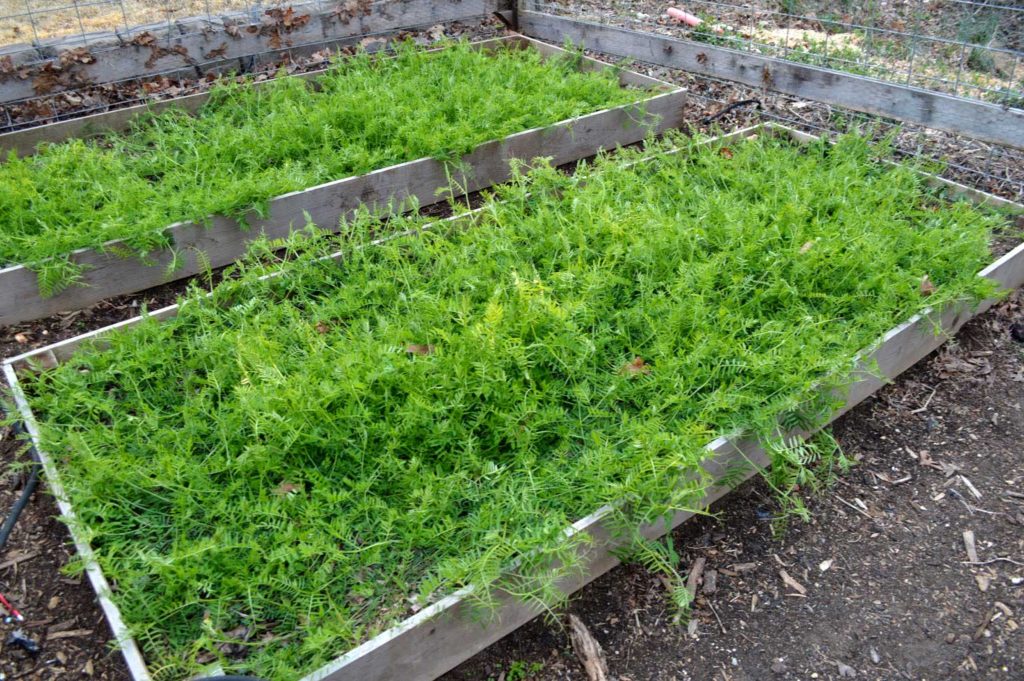
Hairy vetch should not be a living cover crop with tomatoes. Instead, it needs to be tarped and killed prior to planting or mowed. Tomatoes benefit from the nitrogen and weeds are prevented with the decomposing plant matter on the surface of the soil.
Tomato Companions for Increased Yield and Disease Suppression
Hairy Vetch
In a study, ten cultivars of processing tomatoes were grown in bare soil, black polyethylene, and hairy vetch mulch (it was living then mowed prior to planting). Mulches were evaluated for yield, fruit processing quality, and leaf necrosis. Yields were higher, fruit was heavier, and leaf necrosis less in hairy vetch mulch than in bare soil or black polyethylene mulch. Here is the article on increased tomato yield in hairy vetch mulch.
Other Possible Companions
Carrots
The very popular book Carrots love Tomatoes by Louise Riotte, states that carrots are a good companion plant to tomatoes. However, there is no reason why that is stated and no scientific studies referenced.

It is likely that carrots have a neutral effect on tomatoes. They don’t have a positive or a negative effect.
What NOT to plant with Tomatoes
Another piece of companion planting that is good to know is that there are certain crops that should NOT be planted next to one another. I was in my garden literally just yesterday and saw that I had cabbage loopers on my lettuce. Truthfully, I thought it was the most bizarre thing ever because usually cabbage loopers don’t eat lettuce they always go for the cabbage.
What happened was I had cut a cabbage crop down to the roots before planting the lettuce and some of the cabbage leaves were still growing on the roots. As a result, those leaves attracted moths that laid eggs, the eggs hatched and ate the cabbage leaves, then moved to the next leafy green- the lettuce which was right next to it.
That example shows how important it is to avoid other crops that will affect the plant or in this case the tomato negatively. Oftentimes a negative outcome is due to the plants both attracting similar pests.
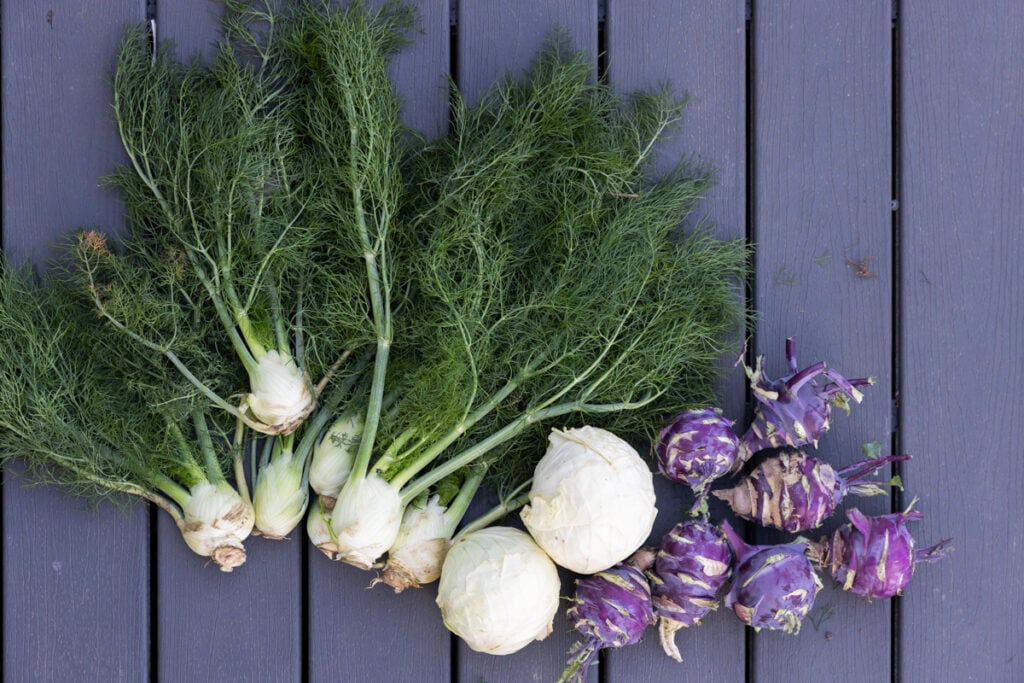
Crops to avoid planting with tomatoes are:
- Anything in the cabbage family. Kale, kohlrabi, cabbage, cauliflower, broccoli, brussel sprouts, bok choy.
- Corn- Tomato fruit worm and the corn earworm are the same caterpillar. Planting your tomatoes next to corn will increase the likelihood of the pest.
- Fennel
- Potatoes- Potatoes are in the same family as tomatoes and diseases are more likely to spread to one another.
Does Companion Planting Actually Work?
There are so many garden ideas floating around it’s hard to know if companion planting is actually beneficial or a myth. The truth of the matter is there is very little scientific studies to back up companion planting. If you know that fact going into it, you won’t be disappointed.
I personally believe that there are benefits of companion planting. Nature always companion plants! You’ll never see one plant variety all by itself unless it has been touched by humans. In the wild there are always many species planted together. We can see it with our eyes through observation that many species should be planted in close proximity.
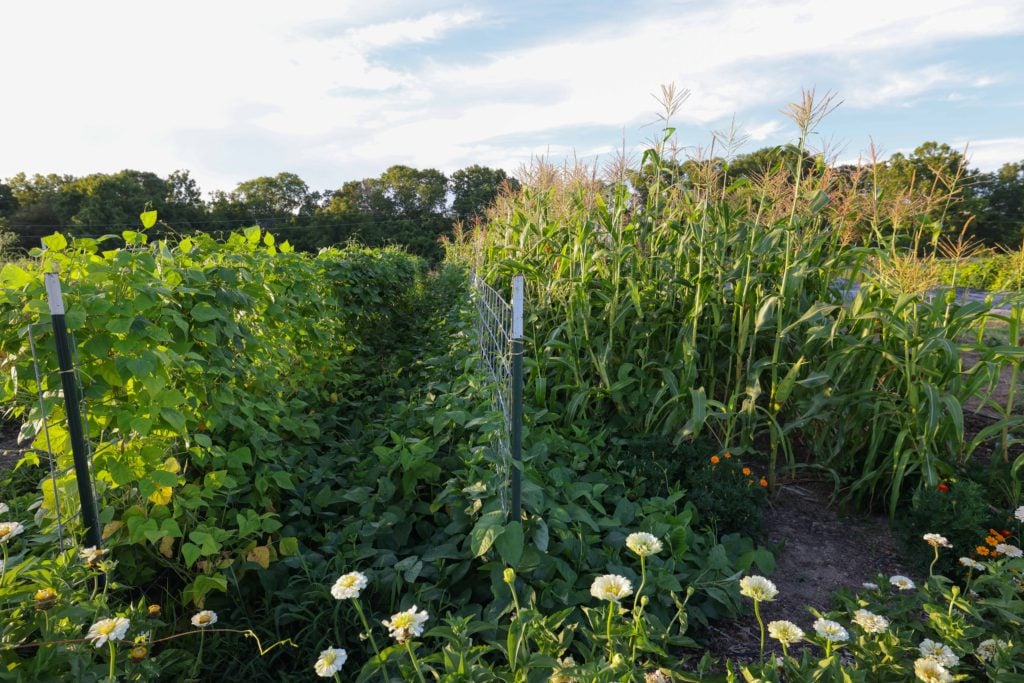
The questionable part of companion planting is whether or not the benefits of reduced pest pressure, increased fertility, increased yields, etc. are a reality. I would highly encourage you to do your own testing.
The tomato companion plants listed in this article are based on several books including Great Garden Companions by Sally Jean Cunningham, Plant Partners by Jessica Walliser, and Carrots love Tomatoes by Louise Riotte. Other websites and studies are referenced in links. Additionally, my own personal experience of nearly 20 years of intensive gardening is referenced.
Summary
Companion planting is planting at least two species of plants in close proximity. It has many benefits. Here are some examples:
- Reduced pest pressure
- Improved soil life, fertility, and/or structure
- Reduced weed pressure
Each companion planting surrounding tomatoes addresses one or more of these benefits. Some of the best tomato companion plants include marigolds, basil, cosmos, sweet alyssum, clover, and hairy vetch.
More Tomato Guides
- How to Grow Tomatoes (Ultimate Beginners Guide)
- When to Plant Tomatoes
- Best Fertilizer for Tomatoes
- 10 Best Tomato Varieties to Grow


